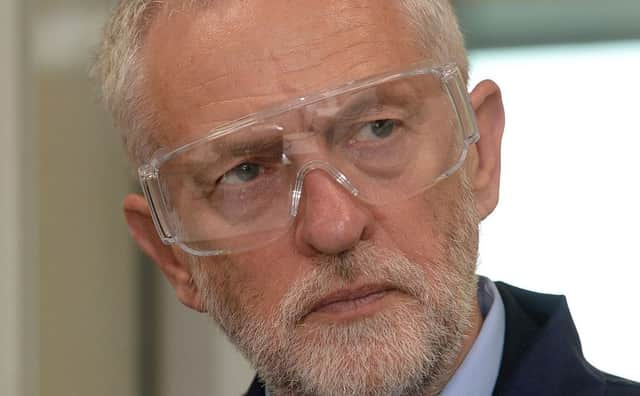General Election: Can increased turnout be the deciding factor?


Of all the variables in a General Election, one of the hardest to quantify is turnout.
Everything from voter enthusiasm to potential saturation to the prospective weather conditions are pored over by political operatives of all parties.
Advertisement
Hide AdAdvertisement
Hide AdTurnout wildly varies from seat to seat, with the prevailing wisdom being that more affluent areas have a higher turnout.
The record for highest turnout is currently held by Fermanagh and South Tyrone in 1951, which has always been a key marginal in Northern Ireland.
In 2015, turnout across the UK was 66 per cent, though in Scotland, turnout was higher, at just over 71 per cent.
We look at whether nationally, young people in particular could lead to a boost in turnout, the potential impact in key seats, and whether the phenomenon of ‘voter fatigue’ is real.
Corbyn youth vote?
Labour had a decent line on the Prime Minister and the Conservatives not once using their considerable online presence to encourage people to get out and vote.
The reasoning, so goes the attack line, is that Theresa May doesn’t want a boost in turnout, because it might put the majority she seemed assured of under threat.
While there’s no definitive study on who are the biggest consumers of Grime music in the UK, there’s a decent chance it isn’t older people in safe Tory seats.
So the ‘Grime 4 Corbyn’ campaign which urged fans of the genre, which has been popularised in recent years by the likes of Stormzy, to register to vote in exchange for the chance to win tickets to a gig, was almost certainly an attempt to drive up young participation.
Advertisement
Hide AdAdvertisement
Hide AdA series of youth-friendly policies by the Labour party, such as the scrapping of University Tuition fees, are aimed to get the traditionally under-represented masses involved in voting on Thursday.
Corbyn has also become the first Labour leader since Neil Kinnock to appear on music magazine NME, and will also grace the cover of metal bible Kerrang.
While polls have been tightening in recent weeks, there still, on average, appears to be a healthy Conservative lead.
For Labour to pull off an unlikely win, there needs to be a significant variable to take everyone by surprise when the votes are counted.
Team Corbyn clearly believe an upswing in turnout among young people could be that very variable.
Specific seats
In certain seats, especially in Scotland, it is thought that some voters who contributed to that higher-than-average turnout in 2015 may not quite be as enthused this time round.
In Gordon, seat of Alex Salmond, the Lib Dems in particular note that they actually achieved their highest vote tally in losing to the former First Minister, but increased turnout, a hangover from the independence referendum, helped the SNP win in that constituency.
With Theresa May seemingly putting the kibosh on Nicola Sturgeon’s plans for a second referendum, and even the First Minister saying the election isn’t about independence, it is possible those Yes voters who coalesced around the SNP in 2015 decide to sit this election out.
Advertisement
Hide AdAdvertisement
Hide AdThat’s not to say that turnout fluctuations are all bad news for the SNP.
A surge in turnout could boost Labour in seats around Scotland, but the party is barely in contention in a number of competitive seats, often a distant second or even third.
With the Tories targeting a number of SNP scalps, and the Lib Dems also pursuing a decapitation strategy in key seats, a surge in Labour support could split the unionist vote, allowing the SNP to hold on.
Fatigue?
Pity the poor Scottish voters. They’ve had to exercise their democratic no less than five times in the space of less than three years.
And now they will go for a sixth this week following the independence referendum, the general election of 2015, the Holyrood vote and Brexit referendum of 2016, and the local elections this year.
It is little wonder so many felt Brenda from Bristol spoke on behalf of the nation when she told a journalist in a vox pop ‘there’s too much politics going on’ when the election was announced.
Speaking to a number of candidates of all shades at this election has shown that this ‘election fatigue’ is far from just a buzzword.
Many politicians and their activists speak of being confronted with similar weary responses to that given by Brenda in April.
Advertisement
Hide AdAdvertisement
Hide AdIt could be that despite the constitution once again being front and centre, and a genuinely different candidate from one of the two main parties, there is just little appetite to troop to the ballot box once again.
Whatever happens, the turnout at the election on Thursday will be one of the biggest factors in determining who gets the keys to 10 Downing Street.
